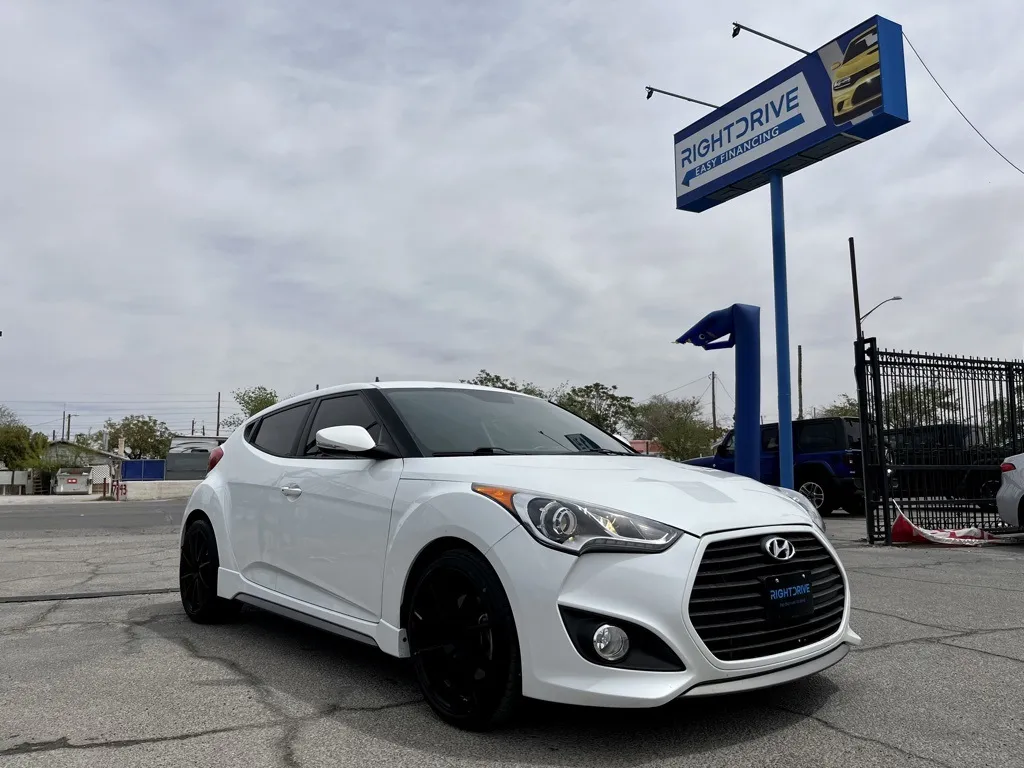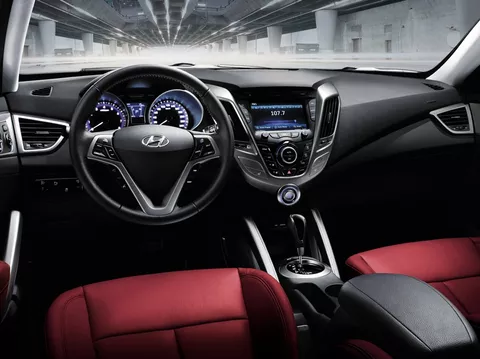
2013 Hyundai Veloster Common Problems & Recommended Maintenance
🚗 Common Maintenance Highlights for Your Car:
- 🛢️ Regular oil changes are crucial to keep the engine running smoothly.
- 🔧 Typical issues include brake wear, battery health, and fluid levels.
- 🕒 Scheduled maintenance intervals are key to avoid costly repairs.
- 📅 Checking tires, belts, and filters periodically improves safety and performance.
⚙️ Recommended Action:
- Follow the manufacturer's maintenance schedule strictly.
- Pay close attention to warning signs like unusual noises or dashboard alerts.
- Keep detailed records of services for better vehicle longevity.
Are you a proud owner of a 2013 Hyundai Veloster? Staying informed about the 2013 Hyundai Veloster common problems and recommended maintenance is the key to saving on repair costs, protecting your investment, and ensuring worry-free driving. This guide helps you keep your car running smoothly by highlighting how regular maintenance and awareness of frequent issues can prevent headaches and expensive repairs down the road. Whether you commute daily or just want peace of mind, following expert advice now means fewer surprises later.
What are the most common problems with the 2013 Hyundai Veloster?
Engine Problems
The 2013 Hyundai Veloster has been reported to experience several significant engine-related issues. One severe problem is connecting rod failure, which can lead to catastrophic engine damage characterized by heavy smoke and excessive shaking, often requiring complete engine replacement. Additionally, some owners report excessive oil consumption, with oil usage reaching about 2.5 quarts every 2,000 miles. Engine knocking, ticking noises, loss of power, and unexpected stalling are also commonly reported symptoms, indicating possible engine malfunction. For detailed owner experiences, visit CarComplaints.
Transmission Issues
Transmission problems notably affect Velosters equipped with the dual-clutch transmission (DCT). Common symptoms include shifting difficulties such as hesitation, jerking, and grinding noises during gear changes. There are also reports of transmission slipping, where the engine revs increase without corresponding acceleration, negatively impacting driving performance and safety. More information is available at HyundaiMaintenance.
Electrical System Faults
Several electrical issues have been observed, particularly with the infotainment system. Users report freezing, random rebooting, and Bluetooth connectivity problems, which can disrupt in-car communication and entertainment. Additionally, rapid battery drainage while the vehicle is parked has been reported, potentially leading to unexpected vehicle starting issues. These problems can impair convenience and functionality. Visit CarParts Blog for a comprehensive overview.
Steering Problems
Steering-related complaints include vibration in the steering wheel, clicking noises, and a "dead spot" or lack of responsiveness in steering motion. These issues can impair vehicle control, posing a safety risk if not addressed promptly. Such symptoms warrant immediate inspection to avoid potential steering failure. More details can be found at AboutAutomobile.
Brake System Issues
The Anti-Lock Brake System (ABS) module in some 2013 Velosters has been reported to develop internal brake fluid leaks that cause electrical shorts. This defect increases the risk of engine compartment fires, representing a serious safety hazard. Vehicle owners are encouraged to check for relevant recalls and seek dealer assistance promptly. Consumer Reports provides additional information on these safety concerns at ConsumerReports.
Suspension & Chassis
Owners report a harsh ride quality along with premature wear of suspension components. This often results in clunking noises and uneven tire wear, which can affect ride comfort and handling performance. Addressing suspension component wear early helps maintain vehicle safety and longevity. Further discussion is available at HyundaiMaintenance.
Sunroof Issues
There have been safety concerns related to the sunroof, with reports of the sunroof glass shattering or explosively failing unexpectedly. This poses a risk to occupants and requires immediate attention if symptoms such as cracking or unusual noises are observed. See owner reports at CarComplaints.
Miscellaneous Electrical Problems
Additional electrical problems include speaker malfunctions with sudden loss of audio output and persistent Bluetooth connectivity issues that may cause the entire entertainment system to freeze. These can diminish the driving experience and should be diagnosed by a professional. More insights can be found at CarParts Blog.
It is important to note that not all 2013 Hyundai Veloster vehicles will experience these problems. Regular maintenance, prompt repairs, and attention to manufacturer recalls can significantly reduce the risk and impact of these issues.

What maintenance tasks are essential for the 2013 Hyundai Veloster?
| Recommended Frequency | Service Items | Notes |
|---|---|---|
| Every 7,500 miles (12,000 km) or 6 months |
- Rotate tires - Inspect battery condition - Inspect air cleaner filter - Inspect vacuum hose - Replace engine oil and filter |
Basic tools required for oil change and tire rotation. Moderate cost for oil and filter replacement. |
| Every 15,000 miles (24,000 km) or 12 months |
- All 7,500-mile services - Inspect A/C refrigerant - Inspect brake hoses and lines - Inspect drive shafts and boots - Inspect exhaust pipe and muffler - Inspect front brake discs, pads, and calipers - Inspect rear brake discs/pads or drums/linings - Inspect electronic throttle control - Inspect steering gear box, linkage, boots, and ball joints - Inspect suspension mounting bolts - Replace climate control air filter |
Some inspections may require professional diagnostic tools. Climate control air filter replacement is generally low cost. |
| Every 30,000 miles (48,000 km) or 24 months |
- All 15,000-mile services - Inspect brake/clutch fluid - Inspect fuel filter - Inspect fuel lines, hoses, and connections - Inspect fuel tank air filter (if equipped) - Inspect parking brake - Inspect vapor hose and fuel filler cap - Replace air cleaner filter |
Brake and fuel system inspections are critical for safety. Air cleaner filter replacement moderate cost. |
| Every 60,000 miles (96,000 km) or 72 months (First Inspection) | - Inspect drive belt (alternator, A/C) |
Belt condition check; replacement may be needed if worn. Typically requires professional service. |
| Every 15,000 miles (24,000 km) or 24 months (After initial 60,000 miles) | - Subsequent inspections of drive belt (alternator, A/C) |
Ongoing monitoring to prevent breakdowns. Professional tools recommended. |
| Every 120,000 miles (192,000 km) or 10 years |
- Replace spark plugs (iridium coated) - Replace coolant (first replacement) |
High-cost items but critical for engine performance and cooling system. Professional service advised. |
| Every 30,000 miles (48,000 km) or 24 months (Subsequent Coolant Replacement) | - Replace coolant |
Helps prevent overheating and corrosion. Requires draining and refilling system professionally. |
For exact instructions and more detail please consult 2013 Hyundai Veloster Owner's manual. You can find it on Car AI App.

Smart ownership tips for the 2013 Hyundai Veloster
Smart car ownership starts with proactive habits. For your 2013 Hyundai Veloster, start by setting up reminders for each recommended service interval, such as oil changes, fluid checks, and tire rotations. Log every service visit and expense to monitor your vehicle's health over time; several apps make this easy and paperless. Get to know the basics of your car by reading the manual—understanding warning lights and recommended intervals can prevent small issues from becoming big expenses. Tools like Car AI simplify everything: this mobile app uses a dedicated AI assistant that provides tailored tips, tracks all maintenance, logs receipts, and keeps your manual at your fingertips. With a sleek interface and intuitive setup, Car AI makes car management effortless, ensuring you never miss important maintenance. For additional resources, consider using vehicle health monitoring apps and setting calendar reminders on your preferred digital platform. Adopting these strategies guarantees optimal performance and helps avoid the most common problems faced by 2013 Veloster owners.
Frequently Asked Questions about the 2013 Hyundai Veloster
Q: What are some common problems with the 2013 Hyundai Veloster that I should watch out for?
A: Common issues reported include occasional engine stalling, faulty door latches, and occasional transmission hesitation. Early detection through regular inspections can help avoid costly repairs.
Q: How often should I perform maintenance on my 2013 Hyundai Veloster to keep it running smoothly?
A: Follow the manufacturer's recommended service intervals which typically include:
- Oil changes every 5,000 to 7,500 miles
- Tire rotations every 7,500 miles
- Brake fluid checks every 20,000 miles
- Transmission fluid replacement every 60,000 miles
- Scheduled inspections of belts, hoses, and brakes
Sticking to this schedule will help maintain performance and prevent breakdowns.
Q: What's the best way to stay on top of my car's maintenance and avoid missed services?
A: Using a car maintenance app is the easiest way to stay ahead. Car AI is a smart choice, with personalized reminders, recall alerts, easy access to the owner's manual, and an AI assistant trained specifically for your 2013 Hyundai Veloster. It also tracks expenses and service history for seamless management.
Q: How can I understand and respond to warning lights on my Veloster's dashboard?
A: Consult your owner's manual to identify each warning light's meaning. Early warnings such as the check engine light or battery indicator often signal manageable issues. Using an app like Car AI provides instant explanations and actionable advice to prevent bigger problems.
Q: What proactive habits can help protect my 2013 Hyundai Veloster from costly repairs?
A: Proactive habits include:
- Setting up reminders for regular service intervals
- Logging every repair and maintenance visit
- Performing routine fluid level checks
- Regularly inspecting tires and brakes
- Using digital tools like calendar apps or Car AI for ongoing tracking
These steps help catch minor issues early, saving money and time.
Q: Is there an easy way to keep my 2013 Hyundai Veloster's maintenance records organized?
A: Yes, digital tools like the Car AI app make it simple to log services, store receipts, and track expenses. This helps you maintain a comprehensive service history, which is valuable for resale or warranty claims.
Summary: Is the 2013 Hyundai Veloster reliable?
Keeping up with your car's maintenance schedule not only prevents common issues like brake wear, battery failures, and engine troubles but also extends its lifespan and safety on the road. Proactive care through timely oil changes, fluid checks, and inspections is essential.
The CarAI mobile app (https://getcarai.com/) makes managing these tasks effortless by providing an AI car assistant, smart service reminders, repair history tracking, recall alerts, and easy access to your owner's manual. These features help you stay ahead of maintenance needs and detect potential issues early, ensuring your vehicle remains reliable and safe.
Download CarAI today and transform your car ownership experience with smarter, simpler maintenance management—because your vehicle deserves the best care!